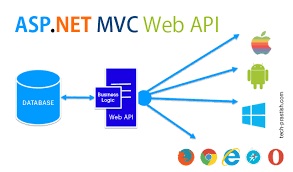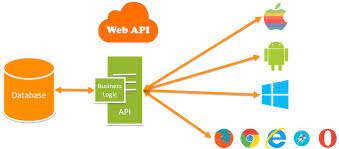In this article, I am going to discuss how to create Custom Method Names in Web API applications. Please read our previous article before proceeding to this article where we discussed how to implement the CRUD Operation in ASP.NET Web API Application and we are also going to work with the same example. As part of this article, we are going to discuss the following pointers.

- Understanding the Default Convention used by ASP.NET Web API.
- Why do we need to create custom action method names in Web API?
- How to create Custom Method Names in ASP.NET Web API??
Understanding the Default Convention used by ASP.NET Web API.
Lets understand the default convention used by ASP.NET Web API to map HTTP verbs GET, PUT, POST, and DELETE to methods in a controller with an example. By default, the HTTP verb GET is mapped to a method in a controller that has the name Get() or starts with the word Get.
In the following EmployeesController, the method name is Get() so by default convention, this is mapped to the HTTP verb GET. Even if we rename it to GetEmployees() or GetSomething() it will still be mapped to the HTTP verb GET as long as the name of the method is prefixed with the word Get. The word Get is case-insensitive. It can be lowercase, uppercase, or a mix of both.
If the method is not named as GET or if it does not start with the word GET then Web API does not know the method name to which, the GET request must be mapped and the request fails with an error message stating The requested resource does not support HTTP method "GET" with the status code 405 Method Not Allowed.
In the following example, we have renamed Get() method to LoadAllEmployees(). When we issue a GET request the request will fail because ASP.NET Web API does not know it has to map the GET request to this method.
To instruct Web API to map HTTP verb GET to LoadAllEmployees() method, decorate the method with [HttpGet] attribute as shown below.
Lets say we have the following two methods in our Employee API controller.
When we navigate to the URI /api/employees/1
Notice, we are getting all the Employees, instead of just the employee with Id=1. This is because in this case the GET request is mapped to LoadAllEmployees() and not to LoadEmployeeById(int id).
If you want the GET request to be mapped to LoadEmployeeById(int id) when the id parameter is specified in the URI, then decorate the LoadEmployeeById(int id) method also with the [HttpGet] attribute as shown below.
Thats OK. But in real-time we may have to implement multiple get or post or put methods within a single controller. For example, we have two methods as shown below
Now when we make a request with the URL /api/employees We will get the below error

Now the question is how to access these two methods along with how we will provide a unique URL to each resource.
First, lets see the default implementation of the WebApiConfig class which is present in the App_Start Folder.
The default route specifies the URL route as domain Name Followed by API and controller name. In our example, it will be http://localhost:xxxxx/api/employees where “employees†is the controller name.
Implementing Custom Method Names in Web API:
To implement Custom Method Names in Web API, lets first change the default implementation of the WebApiConfig class as shown below where we include the action name as part of the route.
Now make a request with the same URL /api/employees It will give us the following error

So change the URL as we need to include the action name in the URL as we do the changes in the WebApiConfig class.
/api/employees/LoadAllEmployees
/api/employees/LoadAllMaleEmployees
Thats it. We have successfully implemented Custom Method Names in Web API. Now you will get the response as expected.
 Best resource for Online free Education
Best resource for Online free Education
